Simple Offer Letter Template for Easy Job Offers
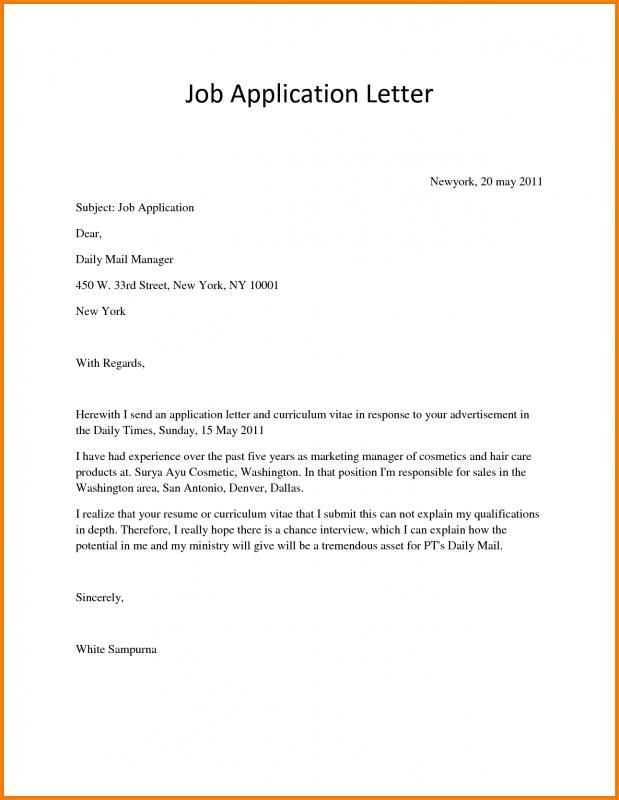
When hiring new employees, providing clear and concise documentation outlining the terms of employment is essential. A well-structured agreement serves as both a formal invitation and a commitment from the company. It ensures mutual understanding and sets the foundation for a positive working relationship. The following guide outlines key aspects of crafting such documents that ensure clarity and professionalism.
Important Elements to Include
To craft a compelling and thorough employment document, certain sections must be clearly defined. These elements ensure that both parties understand their expectations and responsibilities. Here are the most important components:
- Position Title and Description – Outline the role, duties, and expectations for the job.
- Compensation Details – Clearly specify salary, bonuses, and benefits included in the package.
- Working Hours – Include the schedule, expected working days, and flexibility in working hours.
- Start Date – Mention the proposed date when the new hire is expected to begin.
- Legal Terms – Include clauses about confidentiality, non-compete, and other legal requirements.
Customizing Your Document
While templates can serve as a starting point, it is important to personalize the document to reflect the specifics of the position and the company. Tailoring the language and terms to the role ensures it meets both the company’s and the employee’s expectations.
Common Pitfalls to Avoid
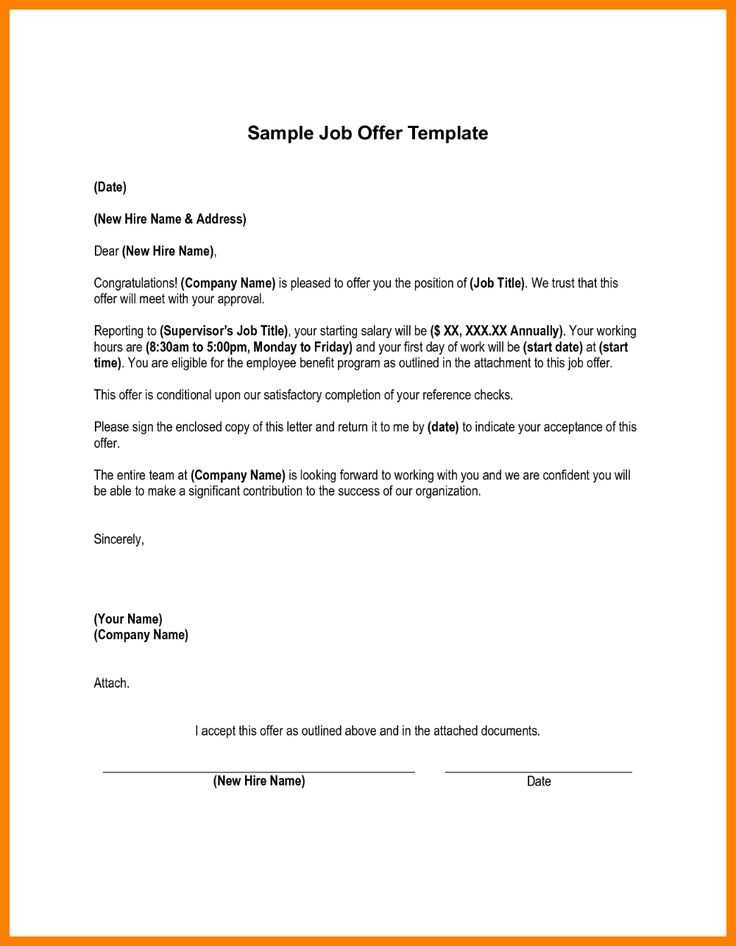
When drafting employment agreements, be cautious of the following mistakes that can lead to confusion or misunderstanding:
- Overcomplicating the language–keep it clear and straightforward.
- Leaving out crucial details like start date or compensation terms.
- Failing to proofread for errors or inconsistencies.
Sending and Finalizing the Document
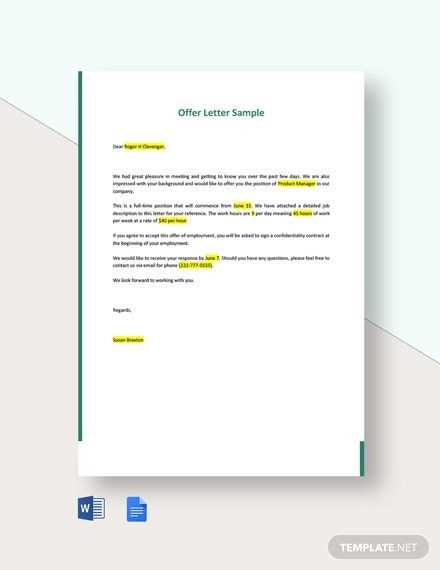
Once the document is prepared and customized, ensure the delivery method is professional and secure. Use email with a clear subject line and allow the recipient enough time to review the terms. Ensure both parties sign and retain copies for their records. A well-handled final step contributes to a positive first impression of the organization.
How to Create a Clear Agreement and Professional Communication
In the hiring process, creating clear, straightforward documentation is key to ensuring both parties understand the terms of employment. This document should reflect the agreement in a professional manner, making sure no important details are overlooked. By focusing on clarity and simplicity, both the employer and employee are better equipped to move forward with confidence and transparency.
Benefits of Using a Concise Structure
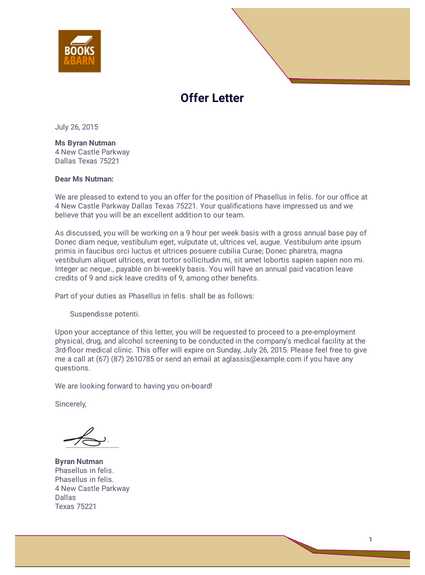
Choosing a direct and simple approach helps prevent confusion and ensures that the message is communicated effectively. A well-structured document saves time and effort for both parties, helping to avoid misunderstandings while keeping the tone professional and approachable. This streamlined format makes it easier for candidates to understand their role and responsibilities from the outset.
Essential Components in the Employment Agreement
When creating this type of document, it’s important to include the following elements:
- Job Title and Role Description – A clear explanation of the position’s duties and responsibilities.
- Compensation and Benefits – Outline the pay structure, bonuses, and additional benefits offered to the employee.
- Start Date and Working Hours – Define when the new employee will begin and their expected working hours.
- Company Policies – Include important clauses related to the company’s policies, such as confidentiality and code of conduct.
Adapting the Document to Fit Your Needs
Each hiring situation is unique, so adapting the document to reflect specific requirements is important. Customizing the language and terms allows for greater clarity, ensuring that all parties are aligned with the expectations. Whether the role is temporary or permanent, tailoring the content makes the document feel more personal and relevant.
Common Mistakes to Avoid
When drafting this type of agreement, some common errors include:
- Leaving out crucial details, such as salary or start dates.
- Using unclear or overly complex language.
- Failing to proofread the document for errors or inconsistencies.
Sending and Finalizing the Agreement
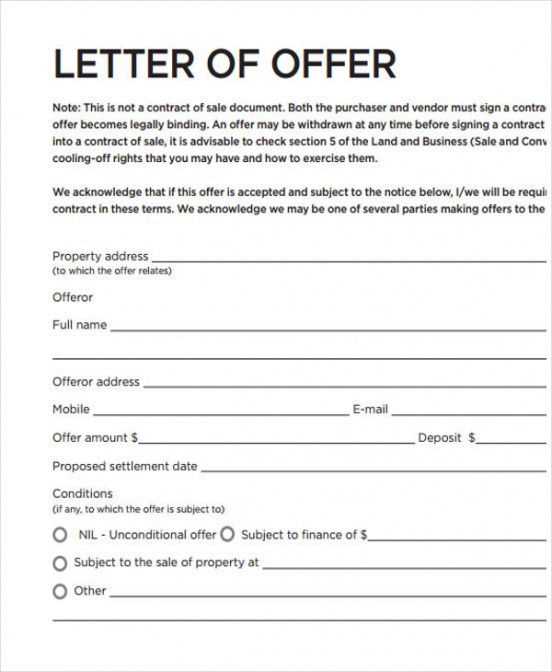
Once the document is finalized, ensure that it is delivered through a secure and professional channel, such as email with a clear subject line. Allow the recipient ample time to review the content, and be available to answer any questions they may have. After reviewing, both parties should sign the agreement and retain a copy for their records to ensure clarity and agreement on the terms.